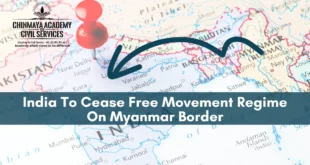Hardline Brexit MPs in Conservative Party seeks change in leadership to extract a new deal from European Union leaders
British Prime Minister Theresa May faced a vote of no-confidence in her leadership of the Conservative Party on Wednesday evening after some pro-Brexit MPs in the party followed through on their warning that they would seek a new leadership of the party to attempt to extract a new deal from EU leaders. Ms. May pledged to contest the vote with “everything” she had. “A change of leadership will put our country’s future at risk and create uncertainty when we can least afford it,” she said on the steps of Downing Street on Wednesday morning, warning that ousting her would risk handing Brexit negotiations to Opposition MPs in Parliament or delaying Brexit. There were growing expectations that in order to rally support within her parliamentary party, the Prime Minister will tell MPs that she is willing to step down before the next election, if they support her at this crucial stage.
Warning to colleagues
During an extremely heated session of Prime Minister’s Questions, she reiterated that message, warning her colleagues that ousting her could simply bring a Labour government closer to reality, which risked “no plan, no clue, no Brexit”. However, she ducked a question from Labour leader Jeremy Corbyn on whether she had been able to persuade EU leaders to change the terms of the withdrawal deal after a day of meeting leaders. On Tuesday, leaders, including German Chancellor Angela Merkel, had made it plain that the deal on the table was the only one on offer. Mr. Corbyn condemned the decision to refuse to set a date for the meaningful vote on the withdrawal deal as “unacceptable”. “Her behaviour today is just contemptuous of Parliament,” he said. There was mounting speculation that even if Ms. May survived the internal party no-confidence vote, she could face a parliamentary no-confidence vote. Should this command a majority and no new government command a majority of support, an early general election would be triggered. Earlier, Sir Graham Brady, the chairman of the backbench 1922 committee of the Conservative Party, said on Wednesday morning that they had reached the 15% threshold for a vote of confidence after at least 48 Conservative MPs submitted letters of no-confidence in Ms. May’s leadership. The secret ballot took place on Wednesday evening in Parliament.
“The country needs a new leader, it is time for Ms. May to resign,” said Jacob Rees-Mogg, the chair of the influential pro-hard-Brexit European Research Group of MPs, who has been one of the main instigators of the no-confidence drive.
Victory number
While the BBC reported that more than 159 Conservative MPs (the number she need to win the vote) said they would support her, uncertainty remained late on Wednesday, given the secret nature of the ballot and the heavy lobbying tactics being used by both sides ahead of the vote. The dramatic turn within the parliamentary party against Ms. May commenced after details of the withdrawal deal first emerged in November, with Brexiteers particularly scathing over backstop arrangements to prevent a hard border developing on the island of Ireland. However, initial expectations of a swift vote quickly dwindled as they appeared to struggle to reach the necessary threshold. It was her decision to delay a vote on the withdrawal deal and attempt to reopen negotiations with EU leaders on Monday evening that swung more of the party against her. The U-turn by Ms. May had come after days of government insistence that the vote would go ahead, while 164 MPs contributed to four days of detailed debate on the withdrawal agreement. Ms. May had attempted to pacify her critics by pledging to return to Brussels to gain new assurances but with EU leaders insisting that the deal on the table was the only one on offer, her critics believed only a new leader, who is willing to risk crashing out of the EU, could extract further concessions from Europe. Holding the vote was a high-risk strategy for all involved. Ms. May required at least 159 votes (or a majority of Conservative MPs) to win, under which circumstances she couldn’t face a vote of confidence (within the party) for at least another year though she still could face a separate no-confidence motion within Parliament. If she lost the vote, she would have to stand down as party leader and a new leadership contest would have to take place, in which she would not be able to stand. This process could potentially take months, involving a two-stage process in which MPs would have to whittle it down to two candidates that would then be put to the party membership. In 2016, when David Cameron stepped down, the process was faster because one of the two candidates dropped out of the race, leaving Ms. May as the only one. Some senior members of the Cabinet swiftly tweeted their support for Ms. May. Work and Pensions Secretary Amber Rudd, who returned to government last month, said the Prime Minister had her “full support” while Home Secretary Sajid Javid said a party leadership election would be “self-indulgent and wrong”.
Source :
 Chinmaya IAS Academy – Current Affairs Chinmaya IAS Academy – Current Affairs
Chinmaya IAS Academy – Current Affairs Chinmaya IAS Academy – Current Affairs



